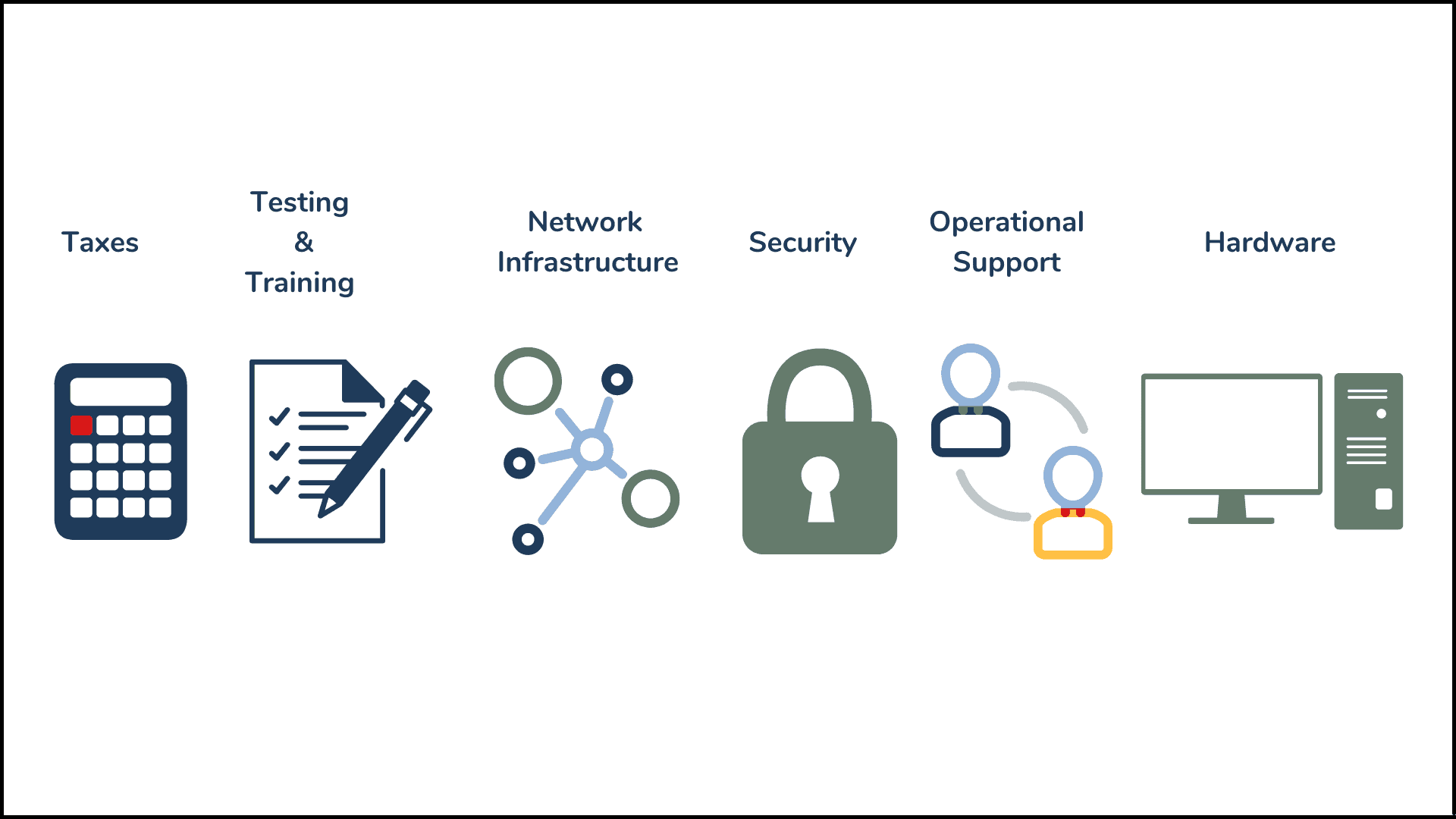In Return of the Jedi, no one in the Rebel Alliance is sure if the (new) Death Star actually works. They’re not sure of how far along the Empire is on the construction of the superweapon. They also don’t know what it’s capable of. The rebels hold a meeting where they discuss what to do – they assume the Death Star is inactive and build a plan of attack around this (erroneous) fact. Of course, they get caught by this “fully operational” Death Star, leading to one of the greatest lines ever uttered by an alien lobsterman in cinema history:

The rebels’ mistake is instructive in two key ways:
1. The old Star Wars films really hold up. Not to be a snob about it, but even Return of the Jedi is untouchable – especially compared to the mess of the most recent movies. We said, what we said.2. The Rebel Alliance should have done more research to close what we call “the confidence gap.”
The confidence gap is a common issue when buying technology. What is it? Simple – the confidence gap is the difference between a buyer’s expectations and a vendor’s understanding. A confidence gap exists when the buying committee is unsure of whether a vendor truly understands their requirements and goals. Think of it as two people, talking past each other about separate (but related) topics. The larger the difference in topic, the greater the drop in confidence and the greater the increase in frustration.
Sometimes, buying committees press on through the confidence gap, ignoring their uncertainty and purchasing technology anyway. Sometimes, the confidence gap is too great to bridge, halting buying projects in their tracks until all can be sorted.
What can cause the confidence gap?
The gap can be widened from both the buyers’ side as well as the vendors’ side,
Buyers:
- Tunnel vision: sometimes buyers want to work with trusted companies they’ve worked with in the past. Sometimes they have a friend at a vendor or want to implement a certain technology no matter what.
- Inertia: Sometimes it’s easier to stick with your incumbent providers. Sure, there’s a lot of good CCaaS tech out there, but maybe it’s easier on everyone to just stick with your old vendor. They might be able to get you what you want.
- Lack of technical expertise: If a client doesn’t understand the technology they’re buying, they can’t understand how it will truly impact their business.
- Over-emphasis on cost: In the drive for cost savings, executives can sometimes carve out key pieces of a technical solution without understanding the ramifications of their actions.
- Lack of alignment: When your buying committee isn’t clear on goals, you lose focus on what you need out of a technology. This lack of focus means that some people might just nod along in agreement while others start to lose confidence that the technical solution being considered is the right fit.
- Lack of leadership: Without a clear leader on a buying committee, it’s easy to lose sight of the goal. Vendors, online research, third party content – all of this can confuse and slow down a buying committee. People lose confidence that they’re buying what they need, and as project momentum slows, people’s confidence slowly decreases as well.
Vendors:
- Impatience: In the pursuit of a deal, a vendor can sometimes become sycophants – yes, we can do that. Sure – whatever you say. Yeah – our SEs will work it out later. This can lead to the salesperson ignoring your needs in order to get a signature.
- Overconfidence: Salespeople believe in their product. That’s good! But sometimes that leads them to believe their product can do anything you want it to. That’s bad. Not every product is right for every customer.
- Lack of technical expertise: Large enterprise network projects are confusing. Cloud-based software migrations are daunting. Software integrations can be frustratingly fickle. In the same way that your buying committee might not understand a product, the salesperson might not understand your existing network ecosystem.
- Lack of context: You might know that your company values security above all else. But how does a salesperson know this? They don’t. Sometimes, core requirements go unsaid, and serve to hobble a project just before the contract is signed.
- Confusing cost models: Vendors bill their products differently. To a salesperson, these fees might make perfect sense. But to you, these costs might make your head spin.
- Lack of listening: In order to meet your requirements, a vendor needs to listen to your requirements, and show you a technology that will best serve your needs. Sometimes, though, vendors are excited about a shiny new solution they want to show off. Other times, they hear what you want, but think you should really focus on something else that’s more valuable. By failing to truly hear a client, they fail to provide a solution that truly meets the needs of the client.
The confidence gap exists when there’s a misalignment between a buyer’s goals and a vendor’s understanding of those goals.
What happens if the confidence gap is left unaddressed?
- Purchases stall. If a buyer loses confidence, they halt the buying process until they feel comfortable. Unfortunately, this can sometimes cause the vendor to push harder and double down, only making the confidence gap even greater.
- Projects are canceled. If the confidence gap can’t get cleared, companies sometimes think it’s safer to stick with the status quo instead of jumping into an unknown future.
- Companies invest in the wrong solution. If a company plows ahead with a purchase and doesn’t close the confidence gap, they risk purchasing a solution that doesn’t fit their needs. Their goals are left unmet, people are left unhappy, and the frustration can lead to negative outcomes for everyone involved.
See: How to Qualify if Someone is Trustworthy in Business? (Especially in the Sales Cycle)
How do you fix the confidence gap?
There’s no easy fix to overcoming a confidence gap. If it were easy, we probably wouldn’t be writing this blog post, every technology project would go smoothly, and the rebels wouldn’t have lost a valuable starship in the Battle of Endor.
There are a few key ways to minimize the confidence gap, and make everyone feel confident about their purchase:
Buyers:
- Gain alignment before the buying project starts. It’s time-consuming to create a project charter that documents goals, risks, roles, and requirements. But building this alignment means that you won’t start getting conflicting feelings when you’re narrowed down between two vendors and suddenly start second-guessing yourself.
- Market research. Make sure you’re considering all options before you hitch your wagon to a horse you’re unsure of. This might mean considering solutions or vendors you’re unfamiliar with.
- Customer referrals and interviews. before buying technology, be sure to reach out to a vendor’s referral customers. Make sure to ask them about any customization they needed, and how well the vendor worked with them to meet their needs.
Vendors:
- Talk less, listen more. It’s easy to fall into the trap of wanting to show off your shiny new functionality. But by taking a second to stop and listen to the client’s true goals, you can also gain insight into the risks and interdependencies they have.
- Bring in the technology experts early. If you feel unsure about a client’s requirements, including integrations to existing technology, that’s okay. Just take a step back and bring in a sales engineer or solutions architect who can clarify everything. If you’re uncertain, chances are that you’re not the only one. You’ll look smart for bringing in the right people.
How can a Third Party help?
It doesn’t matter if you’ve just started looking for a new product, or if you’re in contract negotiations – the confidence gap can appear and grow in any stage of the buying process. At CXponent, we’ve been seen the confidence gap grow and shrink in real-time. We know how to help bridge the gap wherever you encounter it.
What CXponent can do:
- Translate business goals into technical requirements. By serving as an intermediary, we help clients articulate what they want out of a technology. Our experience and expertise mean we can validate that these goals are actually met by what a vendor proposes.
- Clarify confusing cost models. our cost analysis tools allow clients to compare current state costs with projected future costs, no matter how different these cost models may be.
- Build alignment on a buying committee. If it’s a lack of confidence, a lack of leadership, or a lack of understanding, we meet your team where they’re at, giving your team the tools they need to purchase with confidence. We don’t commandeer your committee, but instead empower the team, augmenting your existing committee to offset any weaknesses.
- Solution validation. Unsure of whether or not a vendor solution meets your goals? We can use our technical expertise to make sure your goals will truly be met.
- Planning for the future. If the prospect of a migration or implementation seems daunting, we help clarify it, making sure you have the team and timeline in place to successfully use whatever you’ve purchased.
Buy with confidence
IT buying projects don’t have to be daunting. It might feel like you’re staring down a Death Star trench run (with your targeting computer turned off). But there are some easy tricks you can do to get everyone on the same page, and make sure vendors and buyers aren’t talking past each other. And sometimes, a third party can give you the tools you need to buy with confidence.
Have questions about how to minimize the confidence gap at your company?


.png)



